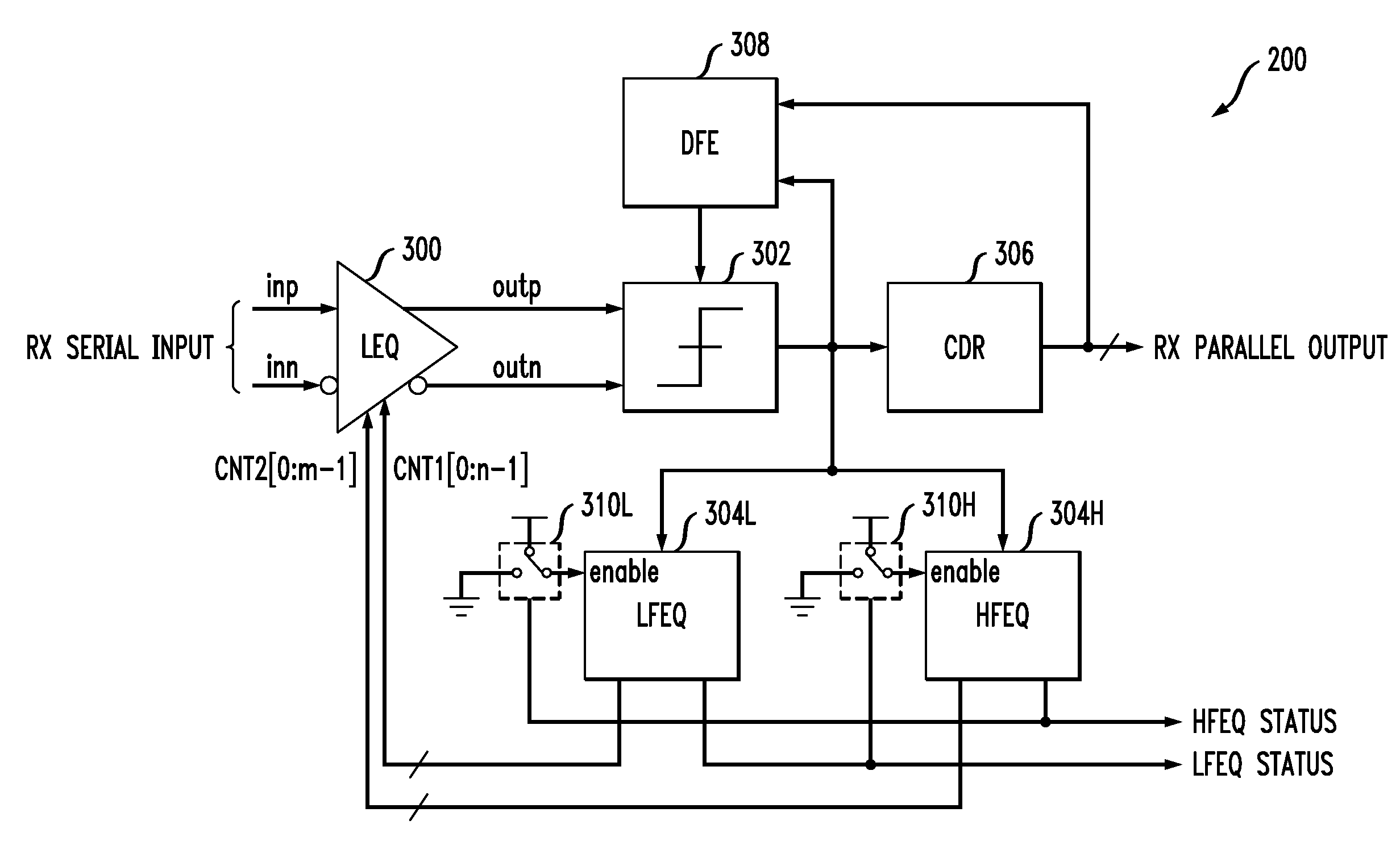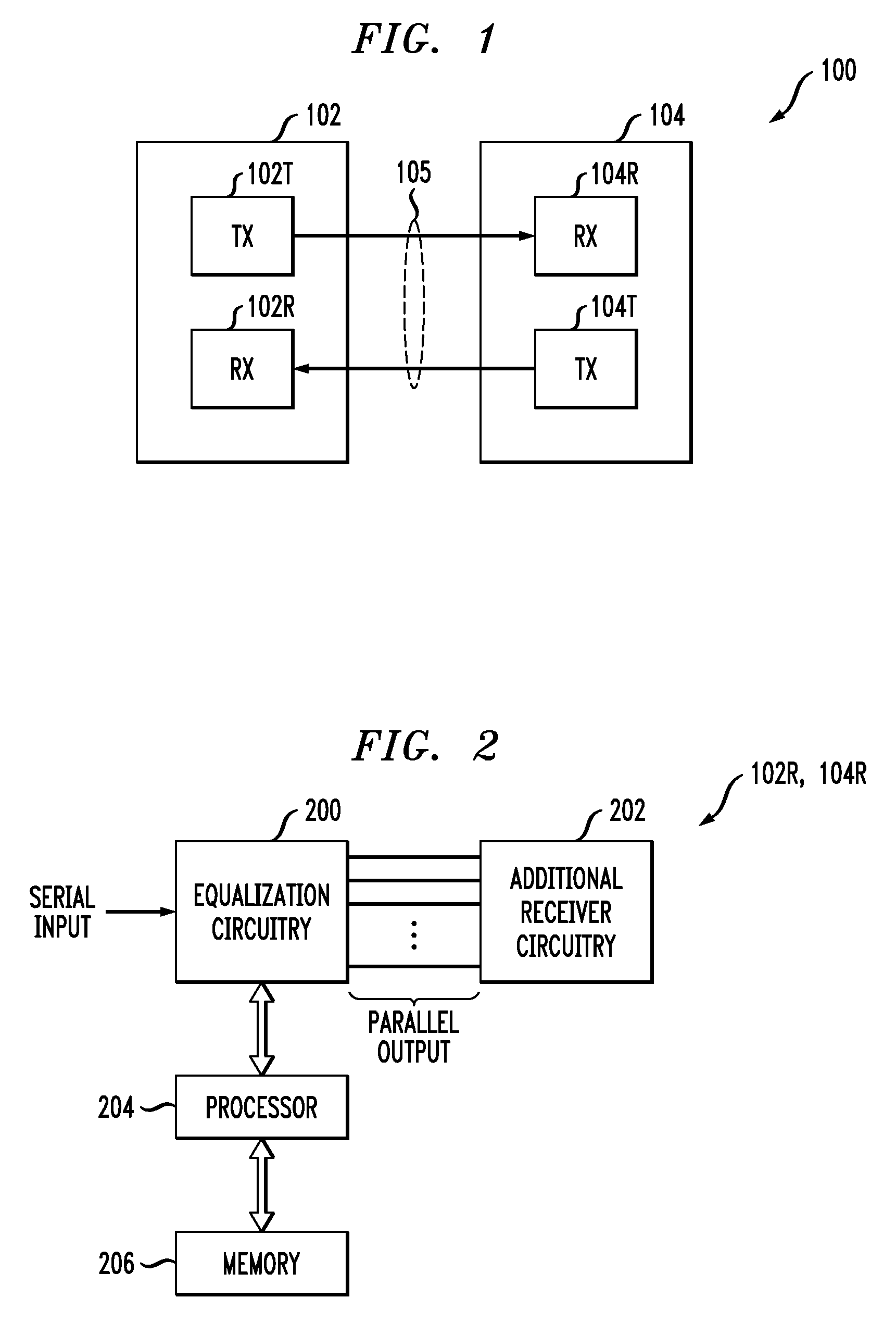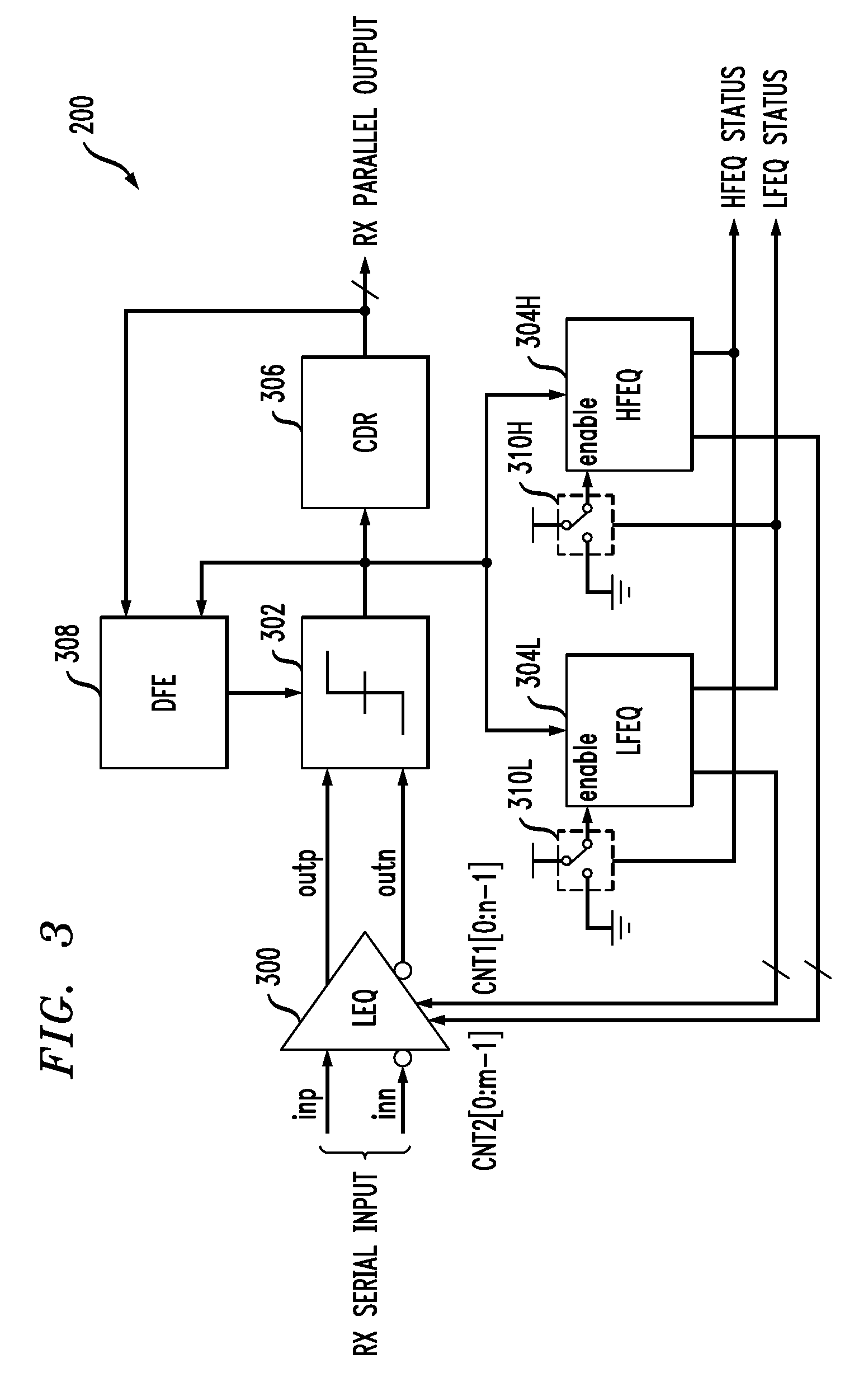Multi-Band Gain Adaptation for Receiver Equalization Using Approximate Frequency Separation
a receiver and frequency separation technology, applied in the field of communication systems, can solve the problems of sub-optimal performance and increase the cost of the associated device, and achieve the effect of improving the equalization of the receiver, avoiding costs and performance limitations
- Summary
- Abstract
- Description
- Claims
- Application Information
AI Technical Summary
Benefits of technology
Problems solved by technology
Method used
Image
Examples
case 1
[0112 illustrates application of SLHA to an under-equalized input data signal having a partially-closed eye diagram.
[0113]FIG. 17 shows the eye diagram of the data signal at the receiver input. It is apparent that the eye is partially closed.
[0114]FIG. 18 shows the eye diagram at the output of the LEQ using default values of 3 for both the CNT1 and CNT2 control signals.
[0115]FIG. 19 shows the eye diagram at the output of the LEQ after the performance of the low frequency gain adaptation portion of the SLHA. The roaming latch offset ΔV was set to 240 millivolts. The CNT1 signal adapts from its default value of 3 to a value of 1 using the low frequency pattern identification approximate rule 1 in the positive polarity flow (PPF) of FIG. 14. There is a noticeable envelope amplitude increase.
[0116]FIG. 20 shows the eye diagram at the output of the LEQ after the performance of the high frequency gain adaptation portion of the SLHA. The CNT2 signal adapts from its default value of 3 to a ...
case 2
[0117 illustrates application of SLHA to an input data signal with an open eye diagram.
[0118]FIG. 21 shows the eye diagram of the data signal at the receiver input.
[0119]FIG. 22 shows the eye diagram at the output of the LEQ after performance of both the low frequency and high frequency portions of the SLHA. The CNT1 and CNT2 control signals adapt from their initial default values of 3 to final values of 4.
case 3
[0120 illustrates application of SLHA to an under-equalized input data signal having a completely closed eye diagram.
[0121]FIG. 23 shows the eye diagram of the data signal at the receiver input. It is apparent that the eye is completely closed.
[0122]FIG. 24 shows the eye diagram at the output of the LEQ after performance of both the low frequency and high frequency portions of the SLHA. The CNT1 and CNT2 control signals adapt from their initial default values of 3 to final values of 7 and 15, respectively.
PUM
 Login to View More
Login to View More Abstract
Description
Claims
Application Information
 Login to View More
Login to View More - R&D
- Intellectual Property
- Life Sciences
- Materials
- Tech Scout
- Unparalleled Data Quality
- Higher Quality Content
- 60% Fewer Hallucinations
Browse by: Latest US Patents, China's latest patents, Technical Efficacy Thesaurus, Application Domain, Technology Topic, Popular Technical Reports.
© 2025 PatSnap. All rights reserved.Legal|Privacy policy|Modern Slavery Act Transparency Statement|Sitemap|About US| Contact US: help@patsnap.com



